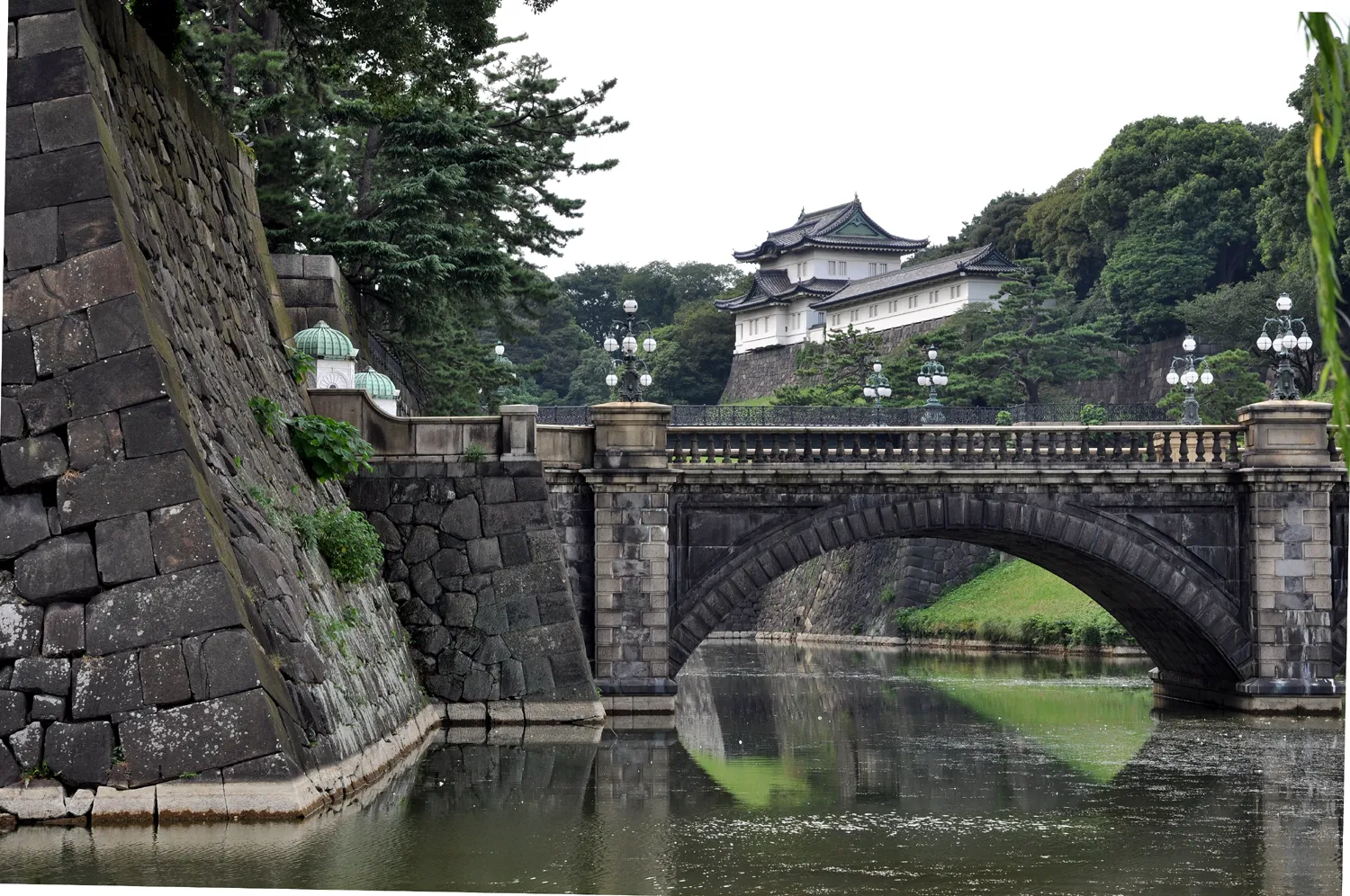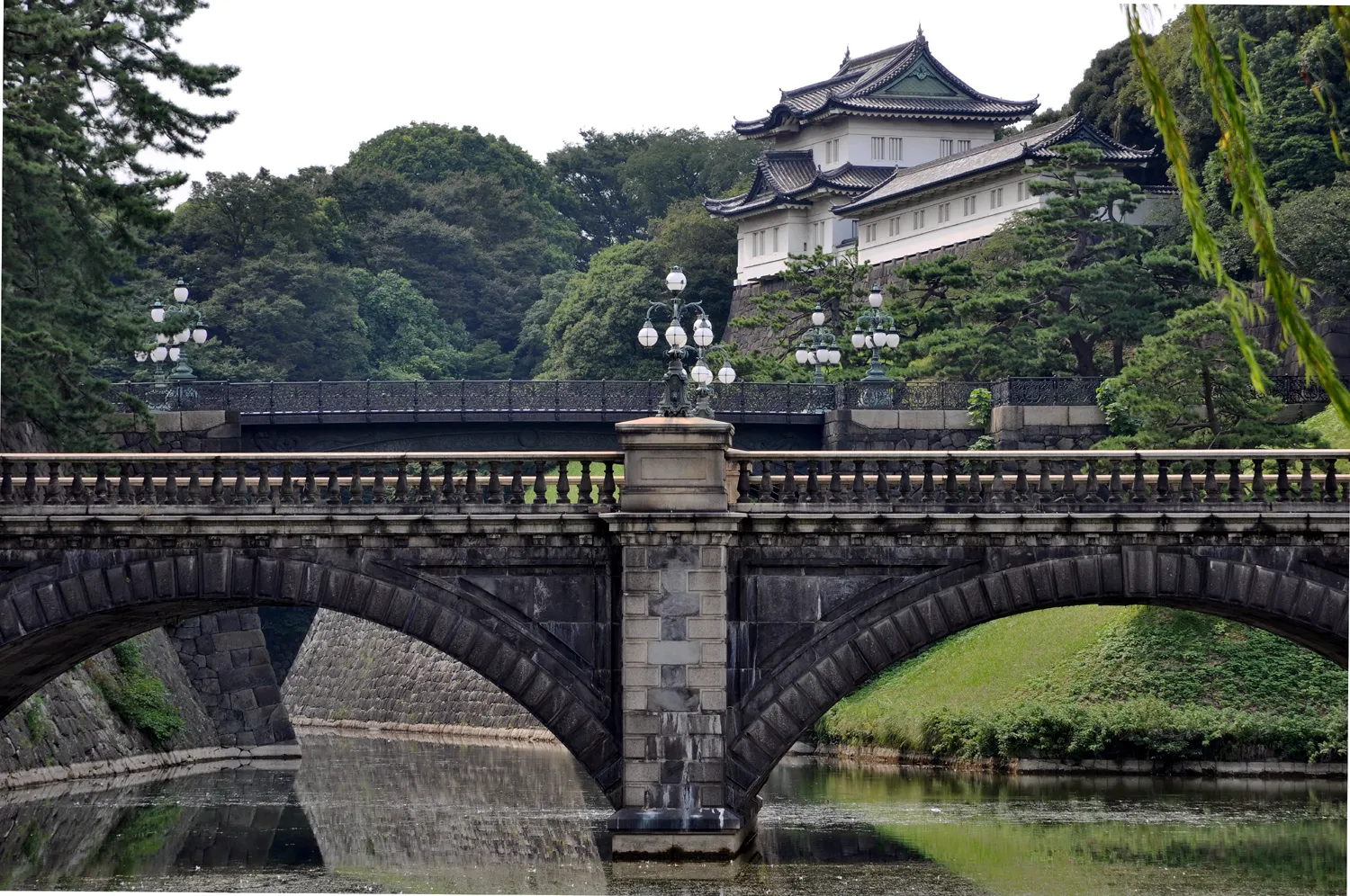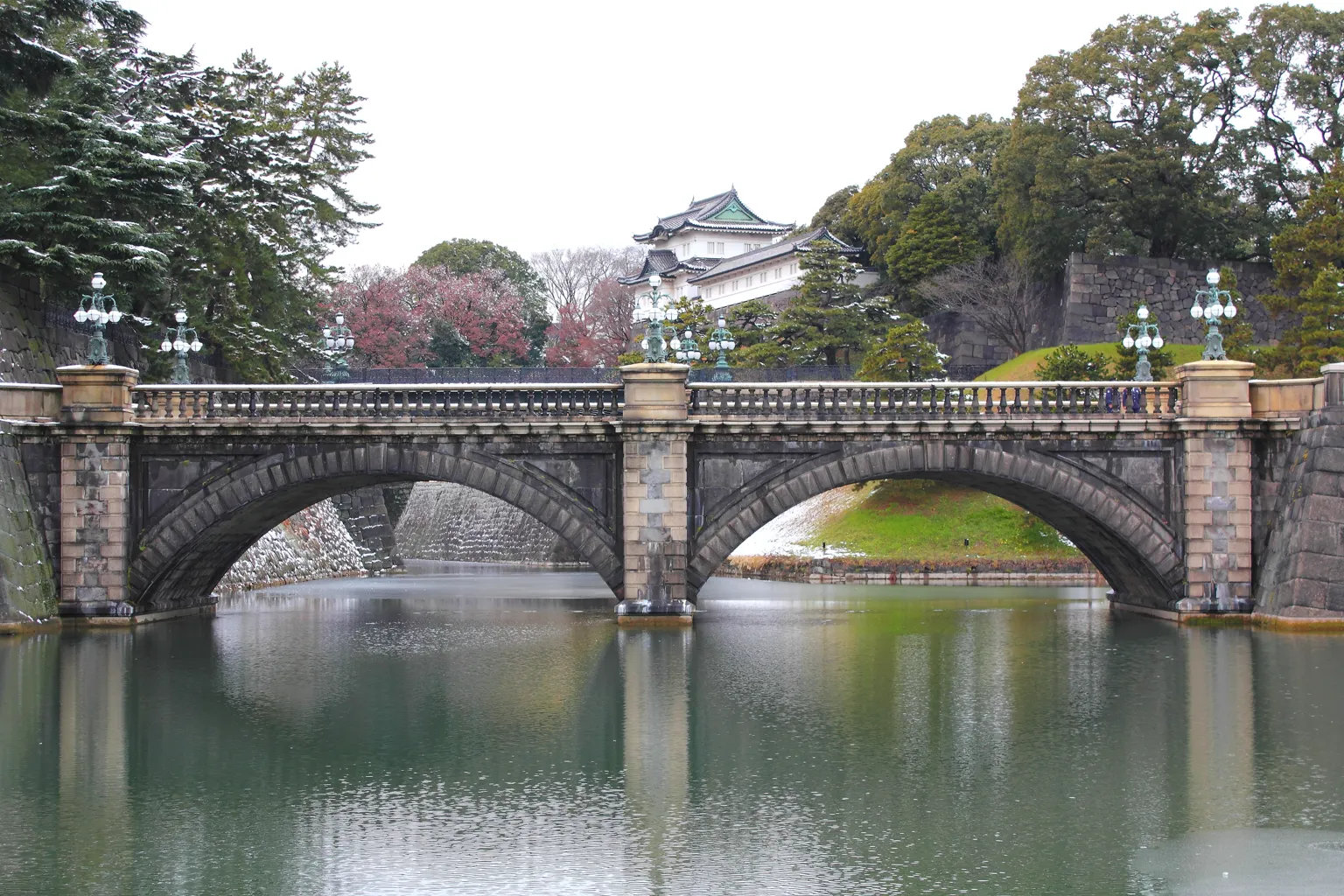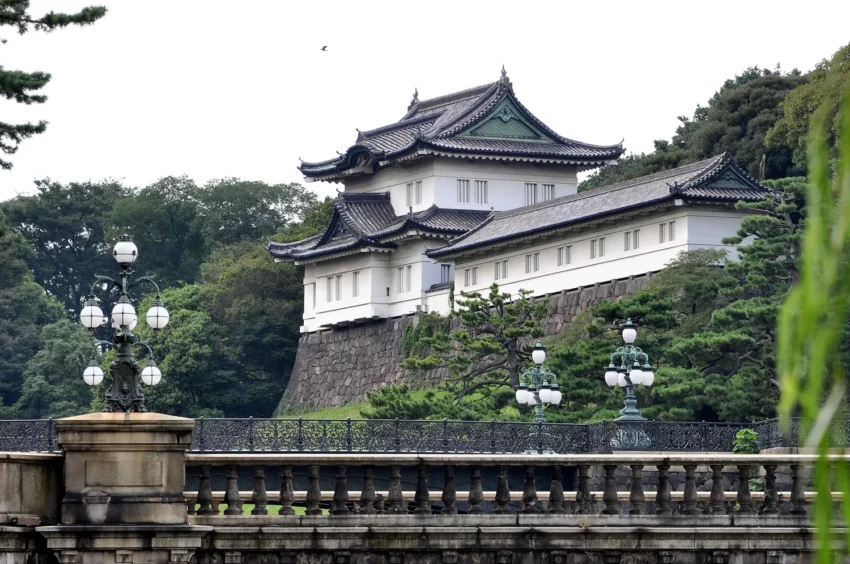Discovering the Tokyo Imperial Palace: A Journey Through History
The Tokyo Imperial Palace stands as a symbol of Japan’s rich history and culture. Nestled in the bustling heart of Tokyo, it serves as the residence of the Emperor of Japan. Let’s explore the history and beauty of this iconic landmark, from its Edo Castle origins to its present-day grandeur.
Get your dose of History via Email
A Brief History of the Imperial Palace

From Edo Castle to Imperial Residence
The story of the Tokyo Imperial Palace begins with Edo Castle, once the residence of the shogun Tokugawa Yoshinobu. After the Meiji Restoration, the shogunate’s decline marked a new era for the site. On November 26, 1868, Emperor Meiji left Kyoto and made Edo Castle his new home, renaming it Tōkei Castle. This marked Tokyo’s transition from Edo and the beginning of a new chapter for the Imperial family.
Edo Castle’s rich history faced challenges, such as the Meireki fire of 1657, which destroyed the original donjon. On May 5, 1873, another fire claimed the Nishinomaru Palace, which had been the shogun’s residence. In 1888, construction began on the new Imperial Palace Castle, blending traditional Japanese architecture with Western influences.
The Transformation During the Meiji Era
The Meiji period saw Edo Castle transformed. Wooden structures were replaced by ones made of stone and iron, while traditional Japanese aesthetics met European elegance inside. Grand chambers featured Japanese-style coffered ceilings, yet rooms boasted Western furnishings and parquet floors.
The palace’s main audience hall became the heart of its public face. It hosted events with over 7,900 square feet of space and a traditional Japanese roof. However, in the late Taishō and early Shōwa periods, concrete buildings emerged, reflecting changing architectural trends. The Imperial Household Ministry and the Privy Council also found their homes in this evolving space.

World War II and Rebirth
World War II brought destruction to the palace. On May 25, 1945, Allied firebombs ravaged the Imperial Palace during a Tokyo raid. Emperor Hirohito later met his Privy Council in an underground air-raid shelter, solidifying the surrender of Japan. The Meiji-era palace was no more, prompting the creation of a new main palace hall, completed between 1964 and 1968 by architect Junzō Yoshimura.
A New Era Begins
In 1948, the palace was renamed Imperial Residence. The eastern grounds became East Gardens, welcoming the public in 1968. Architect Shōzō Uchii’s modern design of the Fukiage Palace was completed in 1993 and currently houses Emperor Naruhito.
The Present-Day Imperial Palace
Exploring the Grounds
Today, the Tokyo Imperial Palace encompasses the remains of the former Edo Castle. Visitors are captivated by the Kyūden, a modern marvel for court functions and receptions. Although the palace grounds are primarily closed to the public, guided tours offer a glimpse of its beauty. The public gathers at the Kyūden Totei Plaza on New Year’s Day and the Emperor’s birthday to hear the Imperial Family’s greetings.

The East Gardens: A Public Treasure
The East Gardens provide a peaceful escape in the heart of Tokyo. Encompassing over 2,300,000 square feet, this area houses administrative buildings, the Imperial Tokagakudo Music Hall, and the Museum of the Imperial Collections. The gardens reflect the harmony of nature and history, with their ponds and restored structures from the Edo period.
Symbolic trees representing Japan’s prefectures stand tall, creating a unique botanical tapestry. The Ninomaru Garden, originally designed by renowned landscape artist Kobori Enshu in 1636, showcases a blend of history and artistry. Though destroyed by fire in 1867, its modern incarnation follows Tokugawa Ieshige’s vision from the Edo era.
Suwa no Chaya: A Touch of Tradition
The Suwa no Chaya tea house stands as a symbol of Edo period elegance. Reconstructed in its original location in 1912, it echoes Japan’s rich tea culture and provides a serene escape.
Surrounding Beauty: Kitanomaru Park and Kokyo Gaien
Kitanomaru Park, located to the north, was once part of Edo Castle’s northern enclosure. Today, it houses Nippon Budokan Hall and a bronze monument honoring Prince Kitashirakawa Yoshihisa.
To the south, the Kokyo Gaien National Garden extends its beauty. Monuments of Kusunoki Masashige and Wake no Kiyomaro grace the landscape. These gardens offer a peaceful retreat amid Tokyo’s urban hustle.
A Living Legacy
Despite the palace’s limited public access, curious tourists have attempted daring entries by swimming across the moat. In 2008, a British tourist took the plunge, using stones and poles to avoid capture. Another incident in 2013 saw two inebriated tourists attempt a swim near Sakurada Gate. Their antics reflect the palace’s enduring allure.
The Tokyo Imperial Palace remains a testament to Japan’s resilience and evolution. From its roots as Edo Castle to its modern incarnation, the palace tells a story of change and continuity. Whether admiring its architecture or strolling through its gardens, visitors find a timeless connection to Japan’s past and present.
Conclusion
Explore the Tokyo Imperial Palace and experience a blend of history and modernity. Whether you’re an architecture enthusiast, a history buff, or a curious traveler, this iconic site offers a glimpse into the heart of Japan’s cultural legacy.
Sources

